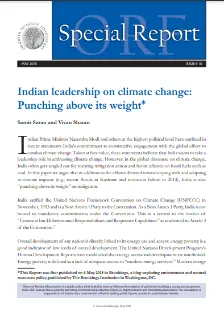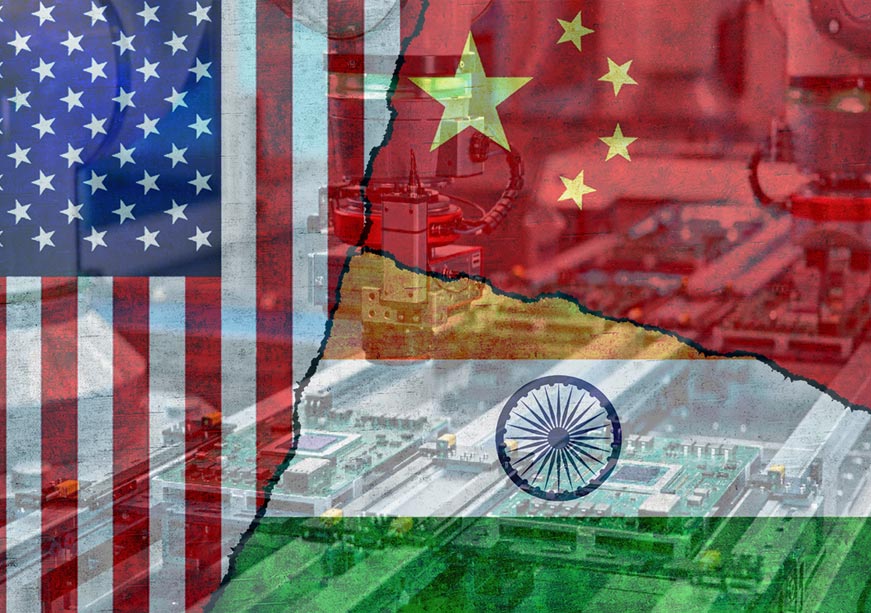In the global discourse on climate change, India often gets singled out for resisting mitigation action and for its reliance on fossil fuels such as coal. In fact, however, in addition to efforts directed towards coping with and adapting to climate impacts (such as the recent Kashmir floods and monsoon failure in 2014), India is also "punching above its weight" on mitigation.
Indian Prime Minister Narendra Modi and others at the highest political level have outlined in recent statements India’s commitment to constructive engagement with the global effort to combat climate change. Taken at face value, these statements indicate that India wants to take a leadership role in addressing climate change. However, in the global discourse on climate change, India often gets singled out for resisting mitigation action and for its reliance on fossil fuels such as coal. In this paper we argue that in addition to the efforts directed toward coping with and adapting to climate impacts (e.g., recent floods in Kashmir and monsoon failure in 2014), India is also “punching above its weight” on mitigation.
India ratified the United Nations Framework Convention on Climate Change (UNFCCC) in November, 1993 and is a Non Annex 1 Party to the Convention. As a Non Annex 1 Party, India is not bound to mandatory commitments under the Convention.
This is a central to the notion of “Common but Differentiated Responsibilities and Respective Capabilities” as enshrined in Article 3 of the Convention.
Overall development of any nation is directly linked to its energy use and access: energy poverty is a good indicator of low levels of overall development. The United Nations Development Program’s Human Development Reports have established that energy access and development are interlinked. Energy poverty is defined as a lack of adequate access to “modern energy services.” Modern energy services include the access of households to electricity and clean cooking facilities-fuels and stoves that do not cause indoor air pollution. The poor in India are spending more than the rich in the developed countries on energy generally and clean energy specifically. Around 306.2 million people in India lack access to electricity, perhaps the largest energy access challenge anywhere in the world. At around 705 million, India also has the highest number of people without access to non-solid fuels.
Carbon dioxide (CO2) emissions from energy use account for the majority of greenhouse gas emissions. According to the International Energy Agency (IEA), “meeting the emission goals pledged by countries under the United Nations Framework Convention on Climate Change (UNFCCC) would still leave the world 13.7 billion tons of CO2-or 60%-above the level needed to remain on track for just 2ºC warming by 2035.” There are at least two ways to tackle this problem. The first is to scale up clean energy efforts, whether in the form of fuel switching from coal to gas or installation of renewable energy capacities. The second option is perhaps harder: lowering energy consumption dramatically by altering lifestyles in developed countries.
For India, the viable solution to address the global climate change challenge is clear. Given its low base, India’s demand for energy will increase manifold in the decades ahead (energy consumption 4 will increase by 128 percent by 2035 according to BP). India will have to scale up efforts on the clean energy front: an enabling global agreement and domestic investment environment are critical for this.

 PDF Download
PDF Download



 PREV
PREV

